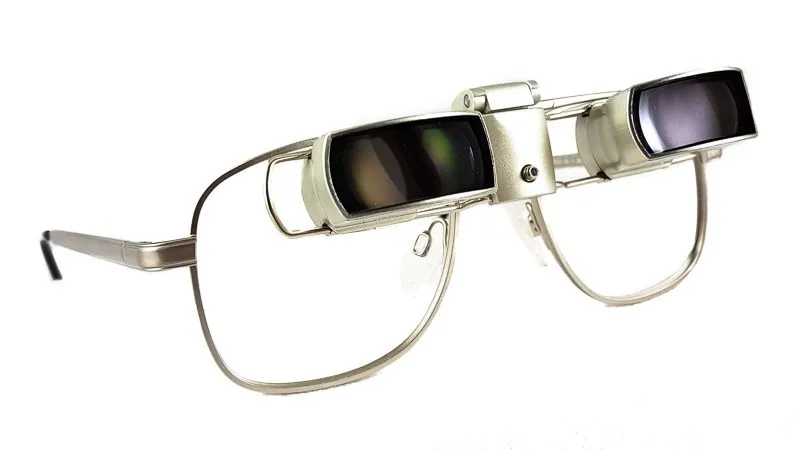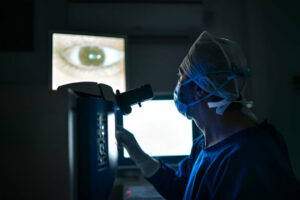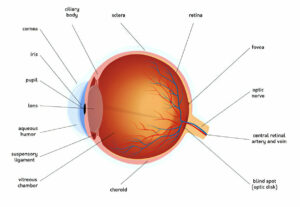
Eye diseases often manifest themselves subtly — in the form of headaches. That is why it’s essential to have an annual eye exam by an experienced eyecare provider.
There are various conditions that can lead to pain behind the eyes, including migraines and ocular migraines (a subtype of migraine that causes visual changes such as blind spots, light flashes or zig-zag lines). Below are some of the more prevalent causes for these types of headaches.
1. Eyestrain
Eye strain or computer vision syndrome has become a serious health risk in our daily lives, resulting in blurred vision, headaches, tired or itchy eyes and dry eye symptoms that often arise after prolonged usage of electronics such as computers, smartphones, tablets and e-readers. Other potential sources include staring directly at close objects for extended periods without taking breaks, as well as working under dim light conditions.
Experiencing eye pain that cannot be explained is cause for alarm and should be reported immediately to a health care provider, as it could indicate an underlying condition. Eye discomfort often manifests itself with burning, throbbing or stabbing sensations which may feel similar to having something stuck in your eye. Pain around the eyes could be the result of many different medical issues including sinusitis, ear infection, migraine headache, cranial neuropathies or cavernous sinus lesion.
An ophthalmologist can diagnose these problems through an eye exam and suggest treatments to alleviate your symptoms, depending on their source. These may include eye drops to treat irritation or prescription glasses/contact lenses; in extreme cases they may also suggest eyelid surgery to correct drooping upper lids causing strain.
Undergoing regular eye exams is key for maintaining optimal visual clarity. An eye exam examines how your eyes change focus, move, and work together in creating a single image of what is seen. Furthermore, an exam may identify refractive errors such as nearsightedness, farsightedness and astigmatism which should be corrected with glasses or contacts.
If you are suffering from headaches or eye pressure issues, contact us right away! We can help alleviate symptoms by teaching proper precautions to take and making sure your prescription remains current. For optimal eye strain relief, remember the 20-20-20 rule – take at least 20-foot breaks between every 20 minutes of screen use in order to view something at least 20-feet away every time your screen time increases by more than two hours.
2. Glaucoma
Eyes contain internal fluid that creates intraocular pressure. This pressure is determined by production of this fluid and its rate of drain from the eye. When its drainage becomes compromised, pressure within increases and may even lead to glaucoma resulting in vision loss and headaches due to this increased pressure.
Glaucoma can be divided into two main forms, open-angle and closed-angle. Open-angle is marked by gradual narrowing of the eye’s drainage angle that restricts internal fluid. Closed-angle involves sudden increases in eye pressure due to blockage of its outflow causing symptoms like blurred vision, redness in the eyeballs and colored halos around lights – symptoms which if left untreated may lead to vision loss and blindness. Both types may lead to headaches.
Headaches associated with glaucoma can be intense and debilitating, often leading to nausea and vomiting as a medical emergency. Seeking immediate attention from an eye doctor should be priority number one.
Although glaucoma cannot be avoided entirely, it can be managed effectively with regular eye exams and treatments plans. People experiencing warning signs should schedule these appointments immediately in order to keep their glaucoma under control and prevent future eye problems.
Eye pressure headaches are an early indicator of an underlying issue, and can be caused by several different things such as eyestrain, intermittent angle closure glaucoma or more serious problems like cavernous sinus lesions – each is extremely dangerous and must be addressed as soon as possible.
If you are experiencing eye pressure headaches, reach out to Broberg Eye Care immediately for an appointment. We can help identify what might be contributing to your discomfort and prescribe appropriate treatments in order to restore optimal eye health and happiness. With multiple locations throughout Minnesota and Wisconsin, Broberg Eye Care looks forward to serving your vision needs and we invite you to contact us now so we can schedule your exam!
3. High blood pressure
High blood pressure (or hypertension) occurs when the pressure of the blood against the walls of arteries remains consistently higher than it should be. Untreated, it can lead to heart disease, stroke and kidney issues as well as headaches caused by changes in blood flow or swelling of vessels in the brain. Headaches are a common side effect of hypertension that may be aggravated by other factors.
High blood pressure symptoms include stress or anxiety, vision problems (including blurry vision), chest pain, nausea, dizziness. While many individuals with hypertension do experience symptoms directly, many other times their condition only comes to light through regular monitoring or through visits to their physician.
Hypertension is a dangerous condition because it damages the arteries that carry blood from your heart to various organs in your body. Once damaged, these arteries may clog with fat and calcium deposits that make blood flow through more slowly – leading to heart disease, strokes, kidney damage and eye problems among other issues.
High blood pressure causes headaches in the occipital region – the back of the head – typically accompanied by dizziness, vomiting, facial flushing and fatigue. Some individuals also develop blood spots under their eyes known as subconjunctival hemorrhage.
Studies have demonstrated that people with chronically high blood pressure are up to 40 percent more likely to experience headaches compared to those with normal blood pressure, due to long-term high blood pressure causing fluid buildup within their skulls and leading to increased pressure within these structures resulting in headaches and other health complications.
Hypertension headaches may be prevented by taking steps to lower blood pressure, such as eating better, exercising regularly, losing weight and avoiding smoking and excessive alcohol consumption. Medication may also be effective at helping reduce hypertension; individuals should always collaborate closely with healthcare providers on developing an individual treatment plan for themselves.
4. Trauma
An unexpected eye pain and blurry vision could be caused by ruptured blood vessel or eye injury requiring emergency care, so anyone experiencing such symptoms should immediately present to an ER and be evaluated by an Ophthalmologist/optometrist.
A 32-year-old female with migraine headaches presented to Wills Neuro-ophthalmology service with two weeks’ history of a dull pressure-like headache and three different episodes involving her vision. The patient reported experiencing flashing lights for 30 minutes; then nausea without scintillations without pressure-like sensation in her head; finally persistent headache which included visual field defect in the right side (twilight blindness).
Traumatic eye pressure headaches typically result from head or facial trauma, such as being hit in the face with something hard, or experiencing any form of head trauma such as being struck in the head with something, for example a blow, hit, impact with object, or being hit in head by hard object. Injuries caused by such impacts can include corneal abrasions, scleral detachments or retinal tears that range in severity from mild to severe and cause symptoms like pain, headaches, nausea dizziness dizziness vomiting vision loss and vision loss among others.
Eye strain or improper eyeglasses or contact lenses can also trigger pressure headaches. Increased focus may force eye muscles to contract and tighten, leading to increased tension on the brain that manifests as eye or sinus pain; using appropriate glasses and contact lenses can help alleviate this condition.
Recurrent headaches could be an indicator of an underlying medical issue such as stroke or other systemic disease. Patients should keep track of all their headaches and present them to their primary care provider or eye doctor for evaluation. Imaging studies such as CT or MRI scans may be performed to detect structural abnormalities in the brain or nearby structures; furthermore laboratory tests such as complete blood count counts, blood work or urine analysis can also help evaluate for exposure to heavy metals or toxins that could contribute to headaches.












